Diversity and Inclusion Training and Strategy

0%
It is important that leadership represent everyone, value diversity, and place importance on inclusivity.
LIP
Diversity and Inclusivity Training
It has been shown repeatedly that diversity and Inclusion are essential to success in business, school or community groups. And though it would be ideal if it happened organically, that isn’t a guarantee. Human nature and old unconscious biases have a way of rearing their heads at the worst moments. But there are steps you can take to ensure that you, your community and your work are as inclusive as possible.
At Work
Like most things at work, the commitment to an inclusive and diverse workplace must come from the top. You may have the best plan, but if your leadership has no true desire to create a better workplace, all your efforts will fall apart. Even if you get the green light from your managers, any implemented changes will either be rejected or be unsustainable in the long run.
So, make sure that your leadership wants a diverse and inclusive workplace. Once that is confirmed, you can move on to the next step: Ensuring that you have inclusive hiring practices. No matter how well-meaning and open-minded a team is, there won’t be much diversity if they are the same. So look into ways to develop inclusive leadership, overcome unconscious bias in resume screening, and make sure you have the right tips for inclusive interview practices.
Once you have inclusively hired people, listen to their needs. Provide a safe place to express their feelings and frustrations, listen to them when they mention certain needs or restrictions and act upon their requests if possible. Most times, the feedback they offer will include free or at least very cost-effective solutions that will ensure happy and productive teams. And in some cases, it is the law that you provide them reasonable accommodations, as noted in the Accessible Canada Act.
Then once you have that system in place, you can learn how to measure inclusion and adjust as needed. Our related articles in the sidebar are great resources to explore.
In the Community
Whether you are a refugee sponsor or the friend/neighbour of a newcomer, there are ways that you can ensure that you make them feel wanted and comfortable in the community. Because you don’t want to misstep and say or do something that may offend or hurt them, after all, you’ll want to start by developing an inclusive mindset; this means having respect for others, open-mindedness, curiosity, cultural competence, kindness, lack of ego, and empathy. It may be difficult at first, but the more you work on this mindset, the better you’ll ultimately be.
Because everybody is different, there are cultural and dominant monoliths reflected in certain communities, but there is still diversity to be found.
Your main goal should be creating welcoming neighbourhoods. Educating yourself should be your first step. Examining your own biases and understanding the myths and realities about newcomers and those about refugees is very important to your ability to create a welcoming neighbourhood. Our related articles in the sidebar are great resources to explore.
If you know that a neighbour has a different cultural background, but you are too uncomfortable asking questions, just google it. A lot of information can be found online, and by doing the slightest bit of research, you can ensure you are on the way to a fully inclusive mindset.
For Educators
The first introduction to Canadian society is directly linked to the classroom. Each student walks into a classroom with an assortment of beliefs created by their immediate family. Once they go to school, they are confronted by the reality that the world is a diverse place. So, educators must ensure that their class is a safe, encouraging place for kids to share their beliefs and cultural perspectives. A teacher can undertake countless activities and exercises to help promote inclusions.
At the Municipal Level
Municipal staff are responsible for serving the community and representing the values and standards of the town, city, or region they serve. As most communities are home to diverse populations, it is important that the community represent everyone, value diversity, and place importance on inclusivity. One way to ensure this is to provide training to all municipal staff. This can be done upon onboarding and continuing throughout their employment.
Below you will find some beneficial resources that can be implemented:
Free
- Local Immigration Partnership – Intercultural Development Inventory® (IDI®) Assessment: Aministered by trained and licensed IDI Qualified Administrators. The respondent completing the IDI Assessment is asked to answer a 50-item questionnaire, available online, that can be completed in 15-20 minutes. The Qualified Administrator can then generate Individual and Group IDI Reports based on the respondent’s answers to provide coaching and other services.
- Local Immigration Partnership – Introduction to Intercultural Competency Workshops: Held monthly via zoom. Introduction to Intercultural Competency is a free introductory workshop featuring topics like Identity and Culture, Value-based Behaviours, Assigning Meaning and Unconscious Bias. A ‘come-as-you-are’ opportunity to learn more about yourself and the people in your life. This session is designed to be interactive and to encourage a desire for continuous learning!
- Hire Immigrants Ottawa (HIO) – Cross-Cultural Competency Training for Employers: This training is designed to equip employers, HR Professionals, and people managers with practical skills, strategies and tools needed to increase cultural competencies and prepare workplaces for a culturally diverse employee base.
- Toronto Region Immigrant Employment Council (TRIEC): TRIEC offers several team-focused and self-paced courses covering cross-cultural teamwork, diverse teams, and more. Employees can complete these courses whenever there is spare time.
Paid
- LinkedIn Learning: LinkedIn Learning requires a paid organization subscription but is home to a treasure trove of courses developed and taught by industry professionals on a number of different topics.
- Circle of Turtle Lodge (CTL): CTL offers seminars on many topics of traditional knowledge as well as workshops.
- Indigenous Corporate Training: Informed, effective Indigenous relations position you to save time and money and contribute to overall reconciliation in Canada. They help thousands of people and organizations build informed, effective, and respectful relationships with Indigenous Peoples and communities every year.
- Vectors Solution: Offers training for educators.
- Canadian Centre for Diversity and Inclusion: Has some wonderful workshops and training opportunities.



